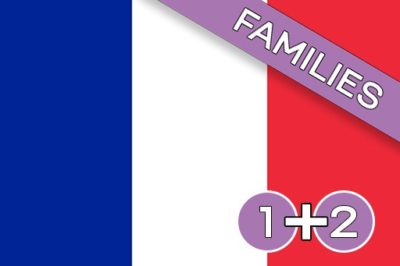We are learning to… Greet people and express feelings.
In this video, you will see Spanish people greeting each other in various ways. Make a note, if you can, of the various greetings you can hear. Notice and discuss all the cultural elements in the video. What catches your eye? In what ways does it look different from your home country?
In this animation, you will learn some of the phrases used for greeting someone in Spanish at various points of the day and in different contexts.
This short animation with voices of Spanish native speakers will present you with possible answers to the “¿Qué tal?” (How are you?) question.
Make a note, if you can, of these answers.
In this animation, you will learn various ways to respond to the “¿Qué tal?” question, as well as express other feelings and emotions.
In this animation, you will discover interesting facts about Spain, including its geography, main cities and official languages. ¿Listos? (Ready?)
Remember to check your knowledge by completing our quiz! Who got the highest score? Adults or children… ?
Challenge 1 – Game
Download the flashcards with various greetings and emotions below and bring them up on your screen/tablet. You will also find them in a printed format at the end of your Course Booklet!
Teach your child/family members the difference between all these greetings, and how to respond to them. Embed them as part of your morning and/or evening routine for one week or more! There are various games you can play with a printed set of Flashcards, such as “mime the flashcard”, “find the missing flashcard” (KIM’s game); or with two sets: memory game, snap game, etc.
Emotion Cards
Challenge 2 – Talking
Make your own hand-puppet or use a shop-bought one (or one of your child’s cuddly toys), and practise saying greetings and expressing feelings with your child. Make sure that after a while, your child uses the puppet and becomes the one asking you questions such as ¿Qué tal? or saying Buenos días etc.
Keep using the puppet throughout this course. It is a great tool which will help you give a context to the learning of Spanish at home. Remember, the puppet only speaks Spanish and everybody should have a go at it!
Children: Suggested School Challenge!
Have a look online at some cultural facts about Spain and the Spanish speaking world!
https://en.wikipedia.org/wiki/Hispanophone
How many people speak Spanish around the world? Where? Spanish is the official language of which countries? Share the results of your research with your family members and your class.
Create a colourful poster about the Spanish speaking world for a classroom display!
If you want to know more, watch this animation about Latin America.
Once you’ve managed your 3 Challenges, you can start lesson 2!





